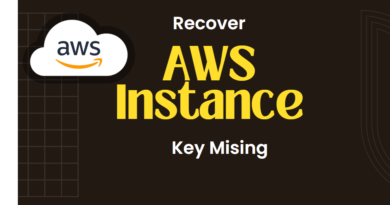AWS Lambda: How to Build Serverless Applications
AWS Lambda is a serverless compute service offered by Amazon Web Services (AWS) that enables developers to build and run applications without having to manage the underlying infrastructure. With Lambda, developers can simply upload their code, and AWS will automatically provision the necessary compute resources to run it.
Lambda is a powerful tool for building serverless applications because it provides a scalable and cost-effective solution for running code in the cloud. In this article, we will discuss the steps involved in building a serverless application using AWS Lambda.
Step 1: Define your application requirements
The first step in building a serverless application is to define the requirements of your application. This includes identifying the functions that your application will perform, the input and output data types, and the resources that your application will require.
Step 2: Create an AWS Lambda function
The next step is to create an AWS Lambda function. This can be done using the AWS Management Console, the AWS CLI, or an integrated development environment (IDE) such as AWS Cloud9.
When creating a Lambda function, you need to specify the runtime environment that your code will run in. AWS Lambda supports a variety of programming languages, including Python, Node.js, Java, C#, and Go.
You also need to specify the function code, which can be uploaded as a ZIP file or a container image. The function code should include the logic for performing the functions that you defined in step 1.
Step 3: Set up event triggers
The next step is to set up event triggers for your Lambda function. An event trigger is a mechanism that causes your Lambda function to be invoked when a specific event occurs.
AWS Lambda supports a wide range of event sources, including AWS services such as Amazon S3, Amazon DynamoDB, and Amazon API Gateway, as well as third-party services such as GitHub and Twilio.
Step 4: Configure IAM roles and permissions
The next step is to configure the necessary IAM roles and permissions for your Lambda function. IAM (Identity and Access Management) is a service that enables you to manage access to AWS resources securely.
When creating a Lambda function, you need to specify an execution role that grants permissions to the function to access other AWS resources. You can also configure fine-grained permissions for your Lambda function using IAM policies.
Step 5: Test and deploy your application
The final step is to test and deploy your serverless application. This can be done using the AWS Management Console, the AWS CLI, or an automated deployment tool such as AWS CodePipeline.
To test your Lambda function, you can use the AWS Management Console or a testing framework such as AWS SAM (Serverless Application Model). Once you are satisfied with your application, you can deploy it to production using a continuous integration and delivery (CI/CD) pipeline.
In conclusion, AWS Lambda is a powerful tool for building serverless applications in the cloud. By following the steps outlined in this article, you can create a Lambda function, set up event triggers, configure IAM roles and permissions, and test and deploy your application. With AWS Lambda, you can build scalable and cost-effective applications without having to manage the underlying infrastructure.




